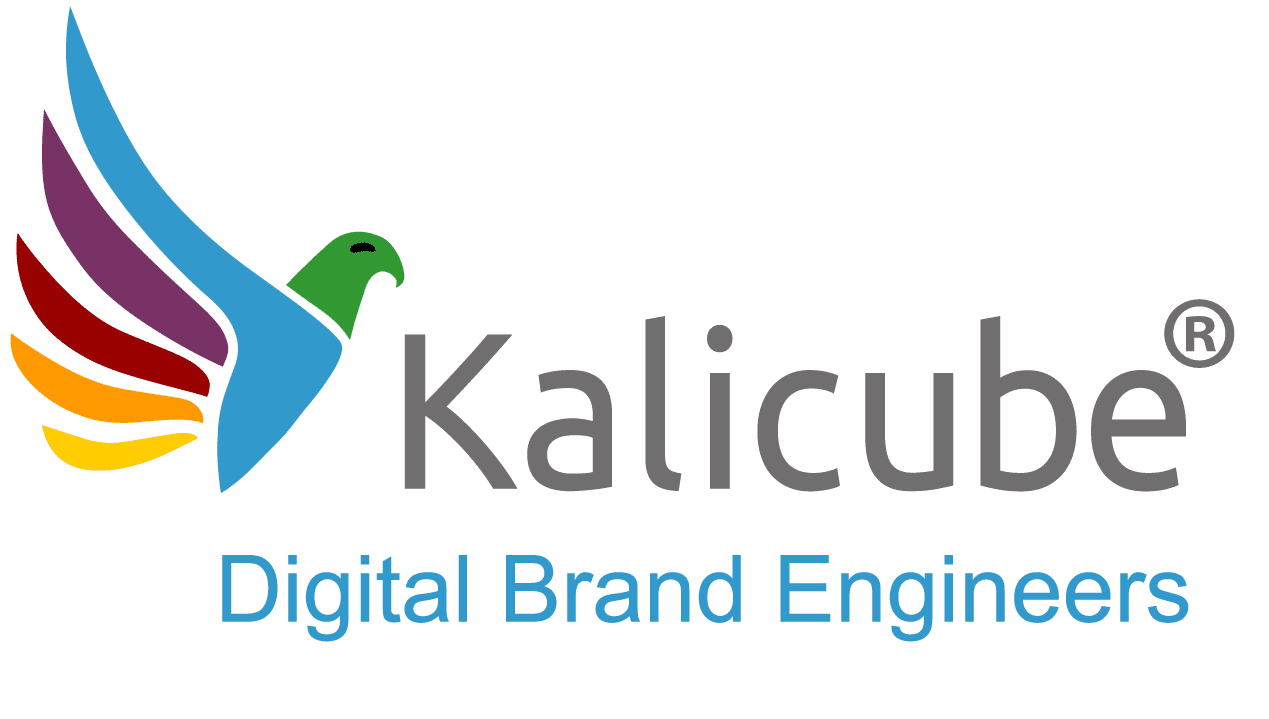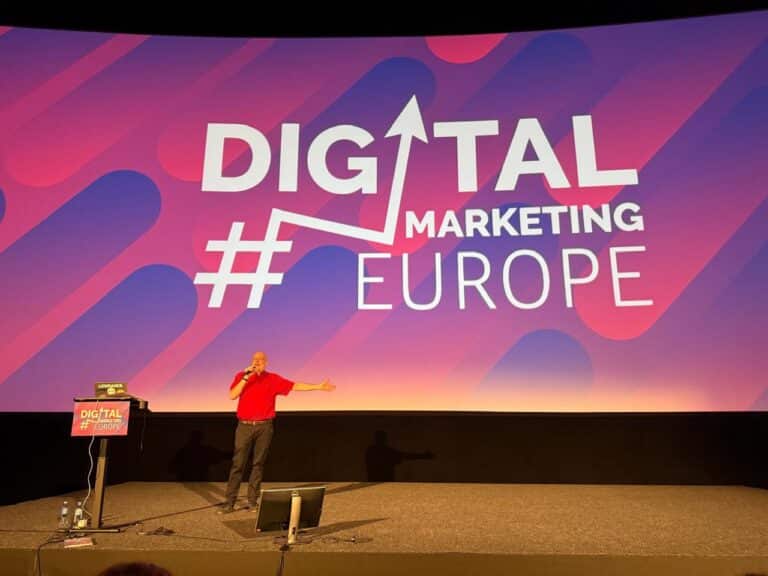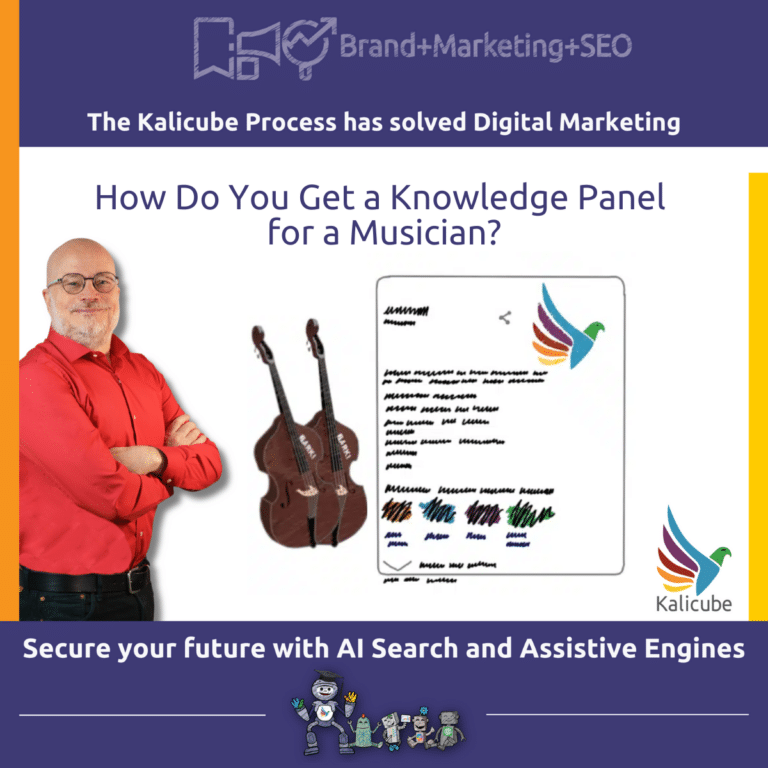Darwinism in Search: 10 Blue Links to Generative AI

What is Darwinism in Search?
Darwinism in Search is how Search Engine Algorithms determine what to display in their Search Engine Results Pages (SERPs). Darwinism in Search is based on the survival of the fittest, and in the context of search, it ensures the most valuable and relevant content appears in the results. It involves determining whether videos, images, news articles, or other multimedia content provide more value to the user than traditional Blue Links. Rich Elements compete for a place on the page, and only the strongest contenders that offer more value than the most helpful Blue Links win a spot on the SERP.
What are Blue Links?
Blue Links are the traditional website results appearing on the left side of a desktop search results page. Blue Links contain the webpage title as a blue link and a description underneath.
When Google launched, the Blue Link Algorithm determined which 10 blue links appeared on the SERPs. The Whole of Page Algorithm now uses the 10 Blue Links Algorithm results as the foundation to decide which results appear on the SERP.
What are Rich Elements?
Rich Elements are enriched results, often called SERP Features. At Kalicube, we call them Rich Elements. They include multimedia elements, rich sitelinks, video boxes, maps, image boxes, and featured snippets (answer boxes). A Rich Element or SERP Feature is any result that isn’t a blue link.

What is Generative AI?
Generative AI is a machine learning technology that trains on information it receives from humans. The machine can use what it’s learned to create something new with that information. In the context of the internet, a Large Language Model (LLM) is one example of generative AI. An LLM can be a chatbot allowing users to ask a question. The chatbot generates an answer based on its synthesis and learning of the LLMs. The LLMs leverage vast Knowledge Graphs, books, research papers, scientific data, and publicly available information on the internet to predict word patterns and relationships between things.

In 2023, the new Bing and Google generative AI features, Bing Chat and Search Generative Experience (SGE), serve machine-learned summaries of the search results. These Generative AI results display as dynamic Knowledge Panels or composite featured snippets with multiple facets. They don’t compete for a place in the SERP in the Darwinistic manner described here. They appear when the algorithm has enough confidence about the entity or topic to satisfy the search intent behind the query.
At Kalicube, we use machine learning in the Kalicube Pro™ SaaS platform. We feed our comprehensive corpus of information about Brand SERPs, Knowledge Panels, digital marketing, and SEO to build Kalibot. Kalibot is a chatbot Kalicube users can talk to and get answers about building their brand presence online.
Darwinism in Search is hugely relevant in the age of generative AI
The Kalicube Process™ uses Darwinism in Search. It’s a tried and proven digital marketing strategy underpinned by SEO best practices that help search engines meet their needs and reward brands with visibility online. The Kalicube Process is a digital marketing strategy that ensures brands survive in the race for a place in the SERPs.
Brands must increase their visibility across the entire digital ecosystem, establish themselves in the search engine Knowledge Graphs, and create information for voice search, multimedia search, and chatbots like Kalibot to compete in the search results.
Pro Tip: The Kalicube Process shows you how.

The Kalicube Process is a three-stage-complete digital marketing strategy that allows brands to optimize their visibility, message, and acquisition funnel across their entire digital ecosystem. The Process is simple, straightforward, and grounded in brand, marketing, and search engine optimization (SEO). It is a future-proof SEO: the Kalicube Process optimizes for Google’s Search Generative Experience and Bing ChatGPT right out of the box.
Where does Darwinism in Search come from?
The phrase “Darwinism in Search” was coined by Jason Barnard, CEO and founder of Kalicube®. Darwinism in Search draws inspiration from the theory of evolution by natural selection proposed by Charles Darwin, which explains how organisms change over time due to variations in their traits and environmental pressures.
During an SEO conference in Sydney in 2019, Jason asked Gary Illyes from Google whether there was a separate Google algorithm for featured snippets. Gary confirmed there was a different algorithm for featured snippets and that featured snippets compete for a place on the SERP. Gary said the Blue Link Algorithm produces a group of results that provides the foundation. Then, the other verticals (videos, images, news, featured snippets, etc.) compete against each other for a place in the results as a Rich Element (Gary talks about “bid”). The algorithms assess each bid from the verticals based on its relevance, quality, and value to the user compared to the best blue link result.
Frédéric Dubut, Senior Project Manager at Bing, confirmed that Bing uses the Blue Links Algorithm as the pillar of its search results.
Is Darwinism and The Blue Link Algorithm still relevant?
Historically, search engines used the Blue Link Algorithm to serve 10 blue links in the search results.
Darwinism in Search and the Blue Link Algorithm meant SEOs focused on keyword density and backlinks to rank their web pages as high as possible in the SERP.
The theory then was that Google used 200 factors to assess the quality of a search result, and SEO and digital marketing strategies revolved around guessing what they were.
Google has moved beyond ranking factors and uses Natural Language Processing, AI algorithms like BERT, MUM, Spam Detection, Neural Matching, Semantic Search, and Entities.
Bing and Google still use the Blue Link Algorithm as the cornerstone of the search results, and Darwinism is more relevant than ever. It’s impossible to know how many algorithms the search engines use with the rise of generative AI, so brands must show empathy to search engines and elevate their efforts to remain competitive in the digital landscape.
Pro Tip: The Blue Link Algorithm remains the foundation of the search results. However, the algorithms have moved far beyond the 200 ranking factors once thought to influence the results. The introduction of AI-based algorithms like Rank Brain, MUM, and BERT at Google (and similar AI algorithms at Bing) means the algorithms are able to assess an image without keywords and use natural language to understand the meaning and intent behind a search - rather than a literal interpretation of keywords. So things have changed a lot.
“Due to advancement in deep learning, Bing can now also understand the image itself instead of just the text” .
Meenaz Merchant, Principal Program Lead, AI and Research, Bing
Did Universal Search Impact Darwinism in Search?
No. Universal Search did not impact Darwinism in search. Google launched Universal Search in 2007. Universal Search aimed to integrate the vast information online and display a simple page of search results. Universal Search made the SERP richer, introducing Rich Elements.
The introduction of Rich Elements in the SERPs dramatically increased competition for visibility.
For Universal Search, the Blue Link Algorithm presents the 10 blue link result candidates. Then, the SERP Features, such as featured snippets and image packs, are individually ranked for each query based on scores known as ‘bids’ for a chance to display on the first page. Based on the results of the bid scores, the SERP will serve those results most valuable to the user based on their search query. When SERP features outscore a standard blue link, they replace the blue link.
This competition is like Darwinism and the survival of the fittest. Why? Rich Elements began replacing one or more blue links. This evolutionary process, driven by search engines improving their semantic understanding of user intent, connects Darwinism in Search to the traditional 10 Blue Link Algorithm.
At the same SEO conference in Sydney in 2019, Gary Illyes from Google confirmed Universal Search is not unique to Google.
“It’s not Google-specific. Other engines do it as well, and because most search engines rank results in much the same way… this is probably applicable to every search engine…”
Gary Illyes
Frédéric Dubut from Bing later confirmed Bing applies a universal approach to ranking.
“We want results that are universally good. And we want these guidelines to be applicable to all the markets in which we operate.”
Frédéric Dubut
In 2020, Jason Barnard recorded four podcast episodes with Bing’s senior search program managers. The Bing team was more open about their approach and processes and confirmed much of Jason’s Darwin theory and his assumptions about how Google does things. You’ll find links to the episodes at the bottom of this article.
How do Google and Bing Decide the Universal Result on the SERP?
Google and Bing have algorithms that decide the universal result on the SERP. Bing calls their algorithm the Whole Page Algorithm. Google is more secretive about the name of its algorithm. In 2022, John Mueller irreverently referred to it as “The Super Search Engine,” Gary Illyes used the term “Universal Mixer.” They confirmed a Whole Page Algorithm exists at Google.
The Whole Page Algorithm decides which Rich Elements are embedded in the blue links. The Whole Page Algorithm is presented with the candidate set from each vertical in the search engine index: Blue links, videos, featured snippets, images, related searches, podcasts, etc., and it builds the best SERP based on the user query and intent.
Nathan Chalmers, Program Manager, Search Relevance Team at Bing, told Jason that click-through isn’t used in the algorithms that create rankings. The click-through rate is critical to evaluating the Whole Page Algorithm: how users interact with the search results is crucial to how Bing measures the success of its product.
At Bing, this user behavior is fed back to Darwin. Darwin is an algorithm within the Whole Page Algorithm with the authority to veto or change any results the other algorithms suggest. After humans interact with Bing search results, Bing staff feed Darwin corrective or reinforcement data to improve performance. So, although Google has insisted that the click-through rate doesn’t affect rankings in the core algorithms, user interaction on the SERP (including click-through rate) does impact whether potential Rich Element candidates appear on the first page of the SERP. Click-through rates affect the layout and design of the SERP. User interaction with the SERP is fundamental in SEO.
Google has not confirmed whether the Whole Page Algorithm has any similar veto algorithm. Google is a commercial product, making a veto algorithm essential.
Pro Tip: The aim of the SERP is to give the user the best solution to their question as efficiently as possible.
How does Google Rank its results?
Google is secretive about how it ranks its results. Gary Illyes confirmed seven ranking factors in a 2022 Search Off the Record Podcast. The factors are the same as those he shared with Jason in 2019.
- Topicality
- Quality
- Page Speed
- RankBrain
- Entities
- Structured Data
- Freshness
Each ranking factor includes multiple sub-factors. For example, Quality includes backlinks (PageRank) but also has many other factors, and Structured Data includes not only Schema.org but also tables, lists, semantic HTML5, and others.
Google groups these factors together and uses signals to attribute each element a score when assessing what will appear in the SERP.
Reminder: There are thousands of factors that assess content, and hundreds of thousands of signals are taken into account by the algorithms to attribute a score. With recent advancements in Machine Learning and Generative AI, the number of Factors and Signals used is increasing rapidly, but we’ll use these as a guide. This article does not define how the algorithms work. The article is an overview of the bidding process.
Read this highly insightful article by Sara Moccand-Sayegh about Factors and Signals in SEO here.
Pro Tip: One bad score can destroy a bid score and remove an otherwise quality result from consideration. The best brands focus on all of them for obvious reasons.

All numbers and calculations are examples created by Jason Barnard to illustrate the concepts he describes in his original groundbreaking “Darwinism in Search” article in Search Engine Journal.
How do Bids for SERP Features work in Google’s Whole Page Algorithm?
Bids for SERP Features work in Google’s Whole Page Algorithm when the Whole Page Algorithm calculates and ranks the bids presented by a candidate set of potential Rich Elements for a SERP.
The Whole Page Algorithm multiplies the individual ranking factors (above) to arrive at a total score for each result. We’ll call this the “bid score.”

One Low Score Destroys a Bid

A sub-par score for one factor, combined with the multiplication of each factor, is disastrous for the second result.
It is possible to overcome a sub-par score, but the scores for the other factors must be significant. At Kalicube, our focus on the survival of the fittest means we focus on all areas of the ranking factors for the brand SERP. We don’t need to be straight-A scholars, but it’s best to be consistent across all the ranking factors to earn a place as a candidate for a Rich Element.
Pro Tip: One bad score can destroy a bid score and remove an otherwise quality result from consideration. The best brands focus on all of them for obvious reasons.

Example of a Bid-Based Ranking

Final Candidate Set
The Whole Page Algorithm does a final check and re-evaluates the bid using multipliers according to intent match and filters for quality. The last candidate set might look like this.

And now it gets interesting.
When you think you have a final set of results, the entire collection of verticals comprising Google’s Rich Elements competes for a place on page one of the SERP.
In this example, we will call the competing Rich Elements “Candidate Result Sets.” It’s a Kalicube-coined phrase and has nothing to do with Google.
Every Rich Element in a vertical: News, Images, Videos, Featured Snippets, Carousels, Maps, Google Business Profiles, etc., presents its list of candidates for judging!

Generative AI results dominate much of traditional blue-link real estate. There is no limit to the number of Rich Elements the search engines can create in the future, so the list will continue to grow.
What are the Ranking Factors for Rich Element Candidate Results?
The Google ranking factors provided by Gary Illyes are listed below.
- Topicality
- Quality
- Page Speed
- RankBrain
- Entities
- Structured Data
- Freshness
Some factors are unique to each vertical. An alt tag is relevant for images and a dedicated news sitemap for a news site’s candidate sets but not for other verticals.
The weighting is different for each vertical because each candidate set provides information in a dedicated format. Freshness will be imperative for news. RankBrain is relevant for Featured Snippets.
The goal is to serve the most suitable Rich Elements to the user in the following terms.
- The content itself.
- The media format.
- The place on the page.
Each vertical produces bids using the same multiplication approach used by the Blue Link Results:

The Results?
In the example below, the Featured Snippet outperforms the best blue link and thus features at the top of the SERP.
Jason Barnard used Featured snippets in his previous works on Darwinism in Search because, at the time, they were dominant.
Generative AI results dominate the top of the SERP. Generative AI does not compete for a place in the SERP. Featured snippets will disappear in 2024 as a Rich Element.
In 2020, SEM Rush indicated that 19% of US SERPs had a featured snippet. August 2023 showed only 5% of US SERPs had a featured snippet.

Which Rich Elements Get a Place on Page 1?
All Rich Elements must outperform a blue link to get a place on page 1.
Please note all the tables and numbers are examples. In his original article, Jason theorizes what Google’s Algorithms might do.
The winning Rich Elements in Jason’s model are listed below.
- News Candidate Set: No candidate outbid a blue link and did not get a place.
- Image Candidate Set: One result outbid a blue link and got a place on page one. (But there is room for five images, so Google displays them too.)
- Video Candidate Set: Two outbid the top web result. Both appear in the results.
- Featured Snippet Set: Several results outbid the blue links, but the best one is at position zero because it is THE answer.
How the Whole Page Algorithm determines the position of each Rich Element is unknown. Based on the information shared by Nathan Chalmers at Bing, we know that placement is determined using a combination of user interaction, user intent, A/B testing, feature type, and cohort analysis.
Pro Tip: Rich Elements push traditional blue links off page one of the SERP.

The Whole Page Algorithm grows and adapts to changing user behavior, devices, and content formats. When the search intent demands it, the Whole Page Algorithm can serve the Rich Element the user prefers and address their needs, even if those Rich Elements have lost a place during the bidding process.
We are seeing this now with Bing Chat, Bard, and SGE.
“Relevancy is being more accurate as to what the user’s intent was and matching it correctly.”
– Meenaz Merchant, Principal Program Lead, AI and Research, Bing.
Why is Darwinism in Search Important?
Darwinism in Search is important because the SERP is a product. Search engines earn money from search results. It’s a user-focused freemium product. The Whole Page Algorithm designs the product: The SERP.
Darwinism in search provides Bing and Google with three primary benefits.
- Search users “pay” by providing Google and Bing with monetizable behavioral data.
- Advertisers pay for clicks on the myriad ad elements.
- SEO, businesses, and other creators “pay” when they provide Google and Bing with the free content that populates the SERP. The free content “feeds” the search engines’ proprietary Large Language Models (LLM) and Knowledge Graphs. The LLM and Knowledge Graphs are growing as the content source for Generative AI results.
Pro Tip: Google Ads compete with other Rich Elements. If the Ad cannot efficiently and effectively provide user satisfaction in the context of the search intent, geo-location, or device, then Google won’t show it.
Ads require additional consideration.
“So, the ads team has to trade-off between money and user satisfaction, and they have models that do that.”
– Meenaz Merchant, Principal Program Lead, AI and Research, Bing
All of Google’s Algorithms in the multiple verticals offer up their best candidates (“candidate sets.”) But the Whole Page Algorithm designs the freemium SERP product and has absolute power of veto, promotion, and demotion.
The Whole Page Algorithm is the keystone for Google and Bing in presenting their products. It designs the SERP using a combination of user interaction, user intent, A/B testing, feature type, cohort analysis, and human feedback from users on the SERP, Quality Raters, and human judges.
“What we’re all working towards is basically optimizing for user satisfaction.”
– Nathan Chalmers, Program Manager, Search Relevance Team at Bing on Branded Search and Beyond
That means looking at click-through rates, perceived intent, ad suitability, format appropriateness, device compatibility, and many more factors. The final “suitable-for-our-product” filter can make or break even the best-optimized content.
The Whole Page Algorithm is the keystone for Google and Bing and should be an essential focus for SEOs, marketers, and business owners.
Generative AI is a Huge Addition to Darwinism in Search
Google and Bing have introduced generative AI results into their SERP. They’ve developed enormous LLMs that trained and learned how to learn using data containing billions of parameters. The LLMs access vast knowledge graphs, books, research papers, scientific data, and publicly available information on the internet to learn to predict word patterns and relationships between things.
Businesses and institutions across the world use Knowledge Graphs to store facts. They aren’t unique to Google or Bing. They are like Wikipedia for machines, only a thousand times bigger, and the LLMs learn and train on their data.
Google and Bing are integrating their LLMs with their Knowledge Graphs. Hence, their LLMs train and learn using the “facts” the engines have stored. The generative AI results are robust and accurate, and searchers are confident with the results produced by generative AI.
Generative AI results like SGE, Bing Chat, and Bard don’t “bid” with the verticals in the same sense as the Rich Elements.
Search engines display generative AI results when they are confident they understand a topic, question, or business.
Pro Tip: Google and Bing use their Generative AI algorithms and LLMs to synthesize the recommendations traditionally included in the Left Rail of the desktop search results (Blue Links and Rich Elements) and the facts in the Right Rail (Knowledge Panels) to produce a summary of the users’ question in the Generative AI results. The summary is an evaluation underpinned by the algorithm’s assessments of facts in their Knowledge Graphs.
The generative AI results appear at the top of the SERP. Businesses are able to leapfrog all the bids and achieve prime positioning in the generative AI results for queries the algorithms understand and are confident about.
Who gets cited in Generative AI results?
The usual prerequisite of providing valuable and helpful content to the user in a relevant format remains. Google and Bing then prioritize those businesses, people, and brands they are most confident about.
How does that work? As the algorithms become more confident about the facts relating to a brand: Who the brand is, what it does, and who it serves, it gets a place in the Knowledge Graph (and the training data). On top of that understanding, the algorithms assess a brand’s credibility. If a brand has provided relevant content, the brand will get a place in the generative AI results.
The generative AI results are a conversation, and they proactively introduce questions for the user that lead them on a buying journey. A user can start with a top-of-the-funnel question, be guided through the purchase process and down the funnel, and be ready to buy your product without visiting your website!
For example, a user researching how to get a Knowledge Panel on Google and Bing sees Kalicube consistently as they study and are brought to Kalicube when they are ready to buy.


Pro Tip: Educating the algorithms about a brand is fundamental to business survival.
Darwinism in Search Works in Four Simple Steps
- Darwinian survival of the fittest is based on the value the content brings to the user for their query.
- Darwinian culling is based on best-fit-for-intent in the context of the SERP.
- Darwinian shaping of the anatomy of the SERP is based on user satisfaction.
- Generative AI summarizes, evaluates, and recommends the next steps for the user.
The first three steps of Darwinism in Search already mean that only the most relevant content survives.
Generative AI takes relevant content a step further: Only the fittest businesses who embrace a digital strategy that satisfies the entire customer journey and packages its content for the algorithms to understand their business will survive.
Pro Tip: Brands that focus on all four will stay in the game.
Traditionally, we have approached SEO by pitting blue links against each other for a place at the top through more compelling information and backlinks.
With multimodal (Universal) search, brands must account for the layout of the SERP (the SERP is a product), add multimedia content to their arsenal, and present content on their website, platforms where their audience hangs out, and elsewhere online.
Generative AI allows brands to dominate the top of the SERP. To do so, brands must educate the search engine algorithms with content for the Blue Link Algorithm and Universal search. The brand must package the content in a machine-readable way. When brands educate the search engine algorithms about the business and their offers and demonstrate credibility, the brand is closer to earning a place in the Knowledge Graph.
Generative AI results are a Gold-Rush-Land-Grab. They are the pinnacle of Darwinism because they sit on top, and brands do not need to fear the Whole Page Algorithm. The generative AI results are founded on knowledge, credibility, and confidence, so it will be challenging to displace the brand, allowing it to dominate for years.
But a brand must get there first.
How to Package Your Business Solutions for Darwinism and GenAI?
To package your business solutions for Darwinism and generative AI, a brand must implement a complete digital strategy and optimize SEO so the content fits Google and Bing’s SERP products.
In the Universal and generative AI SERP context, follow the list below.
- The business solutions provide the best and most effective solution to the user’s problem.
- The business solutions are delivered in the most appropriate format for that user in their current context.
- The business solutions are packaged to fit Google’s product (the SERP).
- Presenting the business solution across the entire digital landscape consistently with corroboration so the search engine algorithms understand and grow confident in their understanding of the brand’s product and content.
And in that context, this approach makes sense.
- I provide the solution to a problem expressed by the subset of Google’s users that are my audience.
- I am asking Google to recommend my solution as the best answer for their user in that user’s current situation.
- What can I do to convince Google to recommend my solution rather than the solution offered by my competition?
The answer to that third point is relatively simple and based on three pillars: Understandability Credibility Deliverability™.
Nail all three, or give up and go home.

Darwinism is not all about SEO (but SEO is essential)
The 10 Blue Links form the backbone of the search results. The Whole Page Algorithm assesses bids across all Rich Element verticals and decides which results will appear based on a semantic assessment of the meaning behind the user’s query. (Put simply, the algorithm tries to understand the purpose and intent behind the words users put in the search bar).
There is veto power built into the algorithm.
The Evolution of Darwin in Search has been:
- 10 Blue Links
- 10 Blue Links and Universal Search: The Whole Page Algorithm started replacing links with rich elements based on user satisfaction.
- Generative AI features now dominate the top of the page. Generative AI results do not compete for a place because they are algorithmically chosen based on Understandability Credibility Deliverability™.
SEOs, business owners, and digital marketers must evolve with the search engines. Generative AI leads users through the entire buying process inside the GenAI result by presenting questions to the user. The user is able to click on the question for more information (see screenshot below).
Building Understandability Credibility Deliverability through consistent information across the entire digital ecosystem and creating a virtuous loop with third-party corroboration of the information earns the trust and understanding of the algorithms. When the algorithms understand the facts about a brand, it gets listed in the Knowledge Graph. With this comes a Knowledge Panel and a brand narrative the brand controls on the SERP.
Pro Tip: The Kalicube Process worked yesterday, works today, and works tomorrow.
Kalicube was ready for generative AI out of the box. Kalicube appeared prominently in relevant AI results all down the funnel from the very start.
Why does the Kalicube Process work so well for every aspect of the SERP?
Because Kalicube creates content that is truly valuable for our audience and delivers it in a way the search engine algorithms can digest it easily.
Kalicube was impressive in the results the day Bing Chat and SGE were released.


Why have I finished this article with the Generative AI results for Kalicube?
Because a Brand SERP serves two roles that are each fundamental to a business:
- Your KPI: It visually represents your success in building a holistic and relevant digital marketing strategy that is appropriately packaged for educating Google and Bing.
- Your business card: When potential customers search for a brand name, they’re ready to buy. The purchase occurs when the prospect sees a SERP dominated by credible, trustworthy information.

Jason Barnard Podcasts with Bing
- How the Whole Page Algorithm Works at Bing (Nathan Chalmers with Jason Barnard)
- How the Image and Video Algorithm Works at Bing (Meenaz Merchant with Jason Barnard)
- How the Q&A / Featured Snippet Algorithm Works (Ali Alvi with Jason Barnard)
- Bingbot: Discovering, Crawling, Extracting and Indexing (Fabrice Canel with Jason Barnard)
- How Ranking Works at Bing (Frédéric Dubut with Jason Barnard)
Contributor:

Jason
Founder and CEO of Kalicube





